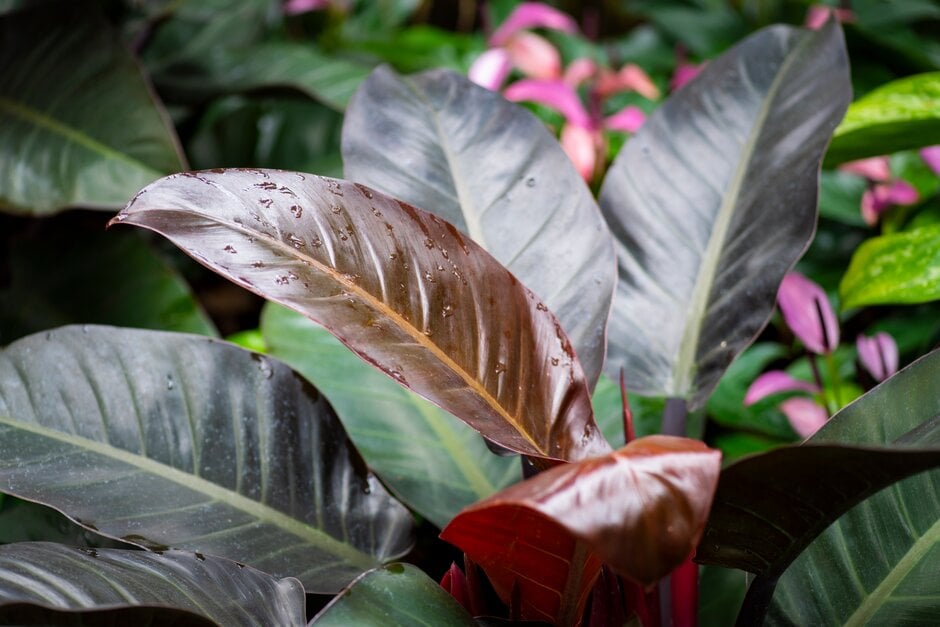Size
Ultimate height
1–1.5 metresTime to ultimate height
2–5 yearsUltimate spread
0.5–1 metresGrowing conditions
Moisture
Moist but well–drainedpH
Acid, Alkaline, NeutralColour & scent
| Stem | Flower | Foliage | Fruit | |
| Spring | Red Purple Green | |||
|---|---|---|---|---|
| Summer | Red Purple Green | |||
| Autumn | Red Purple Green | |||
| Winter | Red Purple Green |
Position
- Partial shade
Aspect
South–facing or East–facing or West–facing
Exposure
Sheltered Hardiness
H1ABotanical details
- Family
- Araceae
- Native to GB / Ireland
- No
- Foliage
- Evergreen
- Habit
- Columnar upright
- Potentially harmful
- Harmful if eaten, skin/eye irritant/allergen. Wear gloves and other protective equipment when handling Pets: Harmful if eaten, skin/eye irritant/allergen - For further information and contact numbers regarding pets, see the HTA guide to potentially harmful plants
- Genus
Philodendron can be shrubs, trees or climbers, with glossy, leathery, evergreen, simple to pinnately divided leaves, and tiny flowers borne within arum-like white, green or reddish spathes
- Name status
Accepted
How to grow
Cultivation
Grow under glass in humus-rich, well-drained compost and in bright but filtered light . Maintain a minimum winter temperature of 15⁰C and water moderately, less in low temperatures. See Philodendron and houseplant cultivation for further advice
Propagation
Propagate by air layering
Suggested planting locations and garden types
- Patio and container plants
Pruning
No pruning required
Pests
May be susceptible to scale insects and glasshouse red spider mite
Diseases
Generally disease-free
Get involved
The Royal Horticultural Society is the UK’s leading gardening charity. We aim to enrich everyone’s life through plants, and make the UK a greener and more beautiful place.
